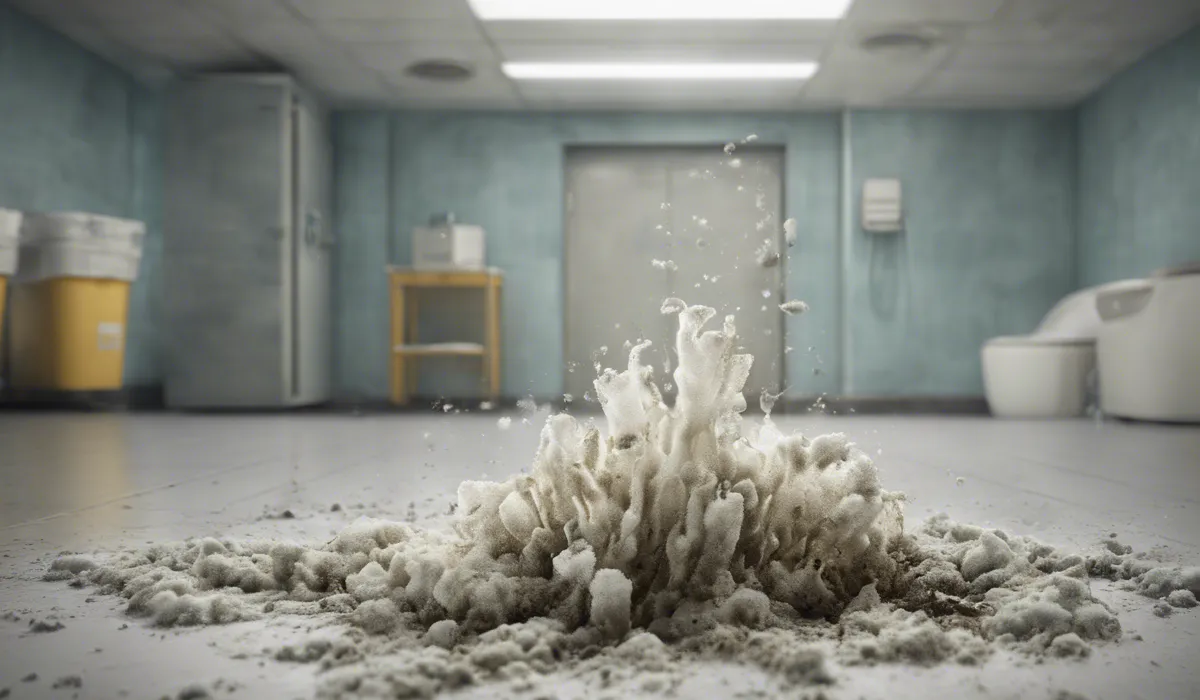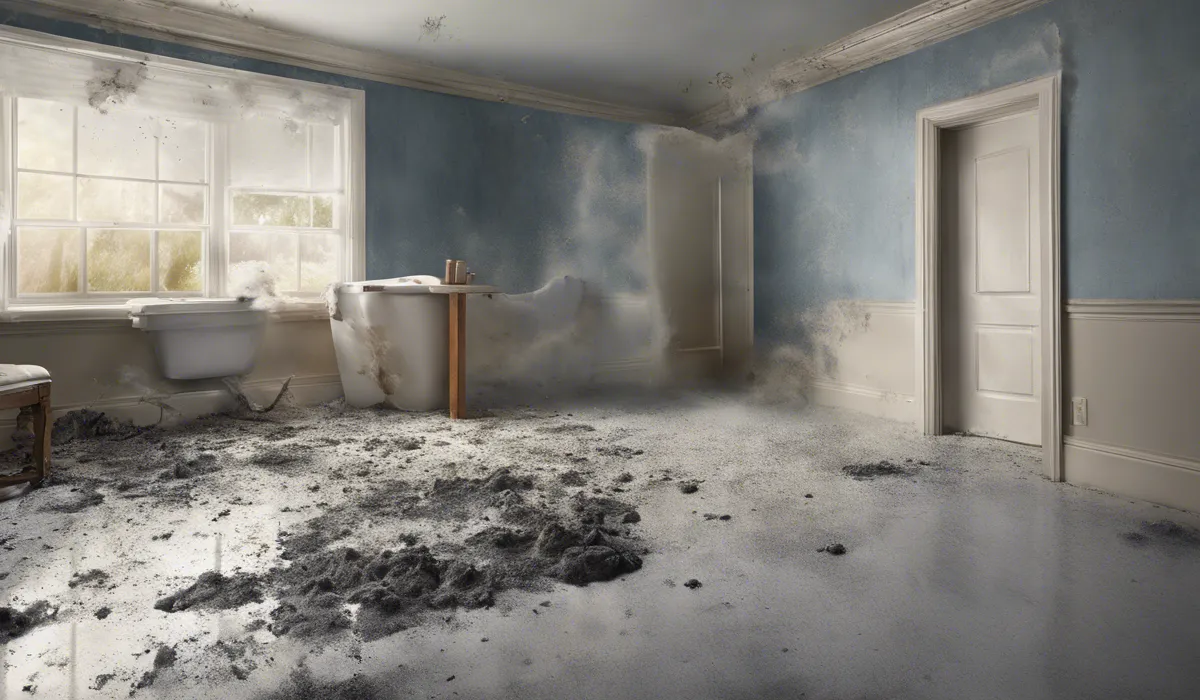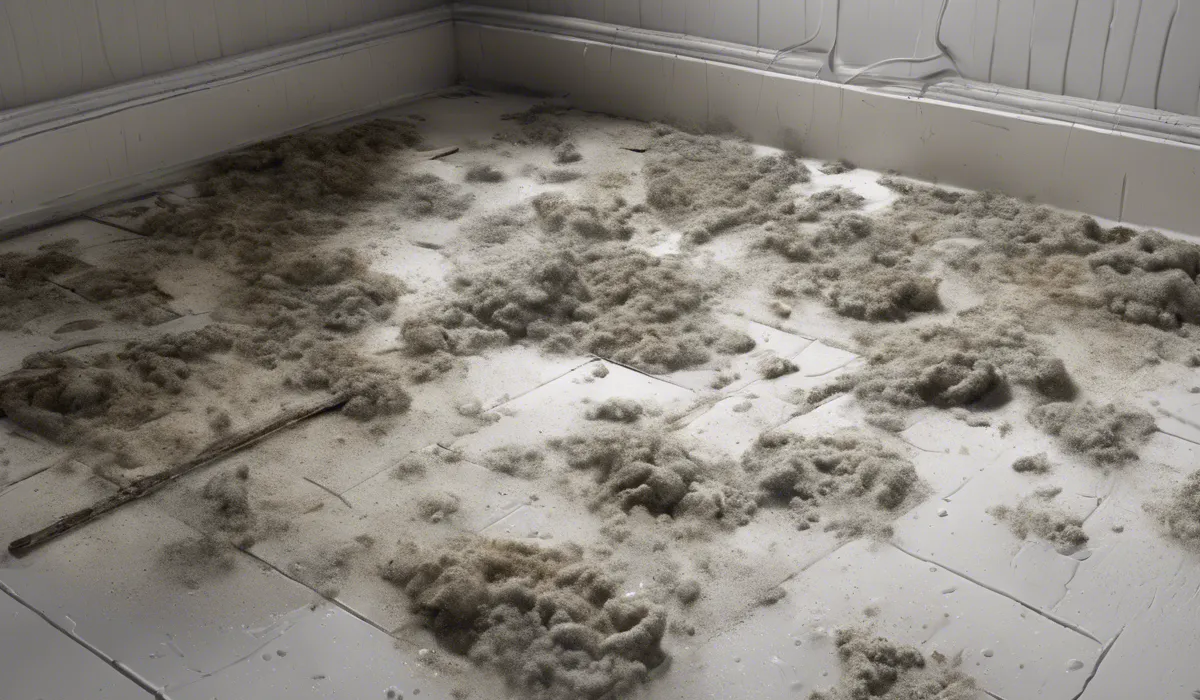To dispose of mold, wear protective gear and scrub surfaces with a mixture of bleach and water. Seal moldy materials in plastic bags before discarding them. Consult professionals for large infestations to ensure safe and thorough removal.
Understanding Mold and Health Risks

Definition of Mold
Mold is a type of fungus that grows in the form of multicellular structures called hyphae. These tiny organisms are found almost everywhere, both indoors and outdoors, thriving on moisture and reproducing by means of tiny, lightweight spores that travel through the air.
Common Types of Household Molds
In homes, several types of mold can be found. These include Aspergillus, which is often seen on food and in air conditioning systems; Cladosporium, typically found on fabrics and wood; and Stachybotrys, also known as black mold, which can grow on water-damaged building materials.
Health Implications of Mold Exposure
Exposure to mold can lead to various health issues, especially for those with allergies, asthma, or compromised immune systems.
Symptoms can range from sneezing, coughing, and throat irritation to more severe allergic reactions and respiratory problems.
Importance of Proper Mold Disposal
Proper disposal of mold is critical to prevent its spread and the potential health risks it poses.
Failure to properly dispose of mold-infested materials can result in the contamination of other areas, exacerbating the problem and increasing health risks.
Safe Mold Removal Techniques

Preparing for Mold Removal
Before removing mold, it’s important to wear protective gear such as gloves, goggles, and an N-95 respirator.
Ensure the area is well-ventilated by opening windows or using fans to minimize exposure to mold spores.
Natural and Chemical Mold Removal Agents
For those who prefer natural solutions, vinegar or baking soda can be effective against mold. Chemical agents like bleach are also commonly used, but must be handled with care due to their corrosive nature.
Step-by-Step Guide on Mold Removal from Various Surfaces
Begin by scrubbing hard surfaces with a mixture of one cup of bleach to one gallon of water.
For porous surfaces, it may be necessary to discard the material if mold has penetrated deeply. Always rinse surfaces with clean water and allow them to dry completely.
Tips for Preventing Mold Spores from Spreading During Removal
Seal off the work area with plastic sheeting to prevent spores from spreading. Mist the moldy area lightly before cleaning to reduce the release of mold spores.
Clean in a manner that minimizes disturbance to the mold to avoid spreading it.
Mold Disposal and Prevention

Proper Techniques for Disposing of Mold-Infested Materials
Mold-infested materials should be sealed in plastic bags before being discarded to minimize the risk of spore dispersal.
If you’re removing large quantities, consult your local waste management to determine the best disposal method.
Cleaning and Disinfecting the Area After Mold Removal
After removing mold, clean the area with a disinfectant to kill any remaining spores. Non-porous surfaces can be cleaned with water and detergent.
Porous materials that have been contaminated and cannot be cleaned should be disposed of properly.
Strategies for Mold Prevention in Homes
Keep humidity levels low, ensure adequate ventilation, fix leaks promptly, and dry wet areas within 24-48 hours to prevent mold growth. Using dehumidifiers and air purifiers can also help maintain a mold-free environment.
When to Call Professional Mold Remediation Services?
If the mold covers a large area or if you have health concerns, it’s important to call professional mold remediation services.
They have the expertise and equipment to handle significant infestations, ensuring safe and thorough removal.
FAQs About Mold Disposal
What should I wear when disposing of mold?
When disposing of mold, wear protective gear such as gloves, goggles, and a mask or respirator to protect your eyes, skin, and lungs from mold spores.
How do I clean mold off of surfaces?
Clean mold off of surfaces by scrubbing them with a mixture of 1 cup of bleach to 1 gallon of water. Make sure to ventilate the area well.
How should I discard moldy materials?
Seal moldy materials in plastic bags before discarding them to prevent the spread of mold spores to other areas.
Can I clean large mold infestations myself?
For large mold infestations, it is recommended to consult professionals for safe and thorough removal, as it may require specialized equipment and techniques.
Is it safe to use bleach on all surfaces for mold removal?
While bleach can be effective for mold removal on non-porous surfaces, it may not be suitable for porous materials. Test a small area first or consult a professional for advice on the best cleaning agents for different surfaces.
Final Thoughts
When disposing of mold, it’s important to wear protective gear and use a bleach-water mixture to scrub affected surfaces.
Contaminated materials should be sealed in plastic bags before disposal. For extensive mold issues, professional assistance is recommended to ensure the removal is thorough and safe.
